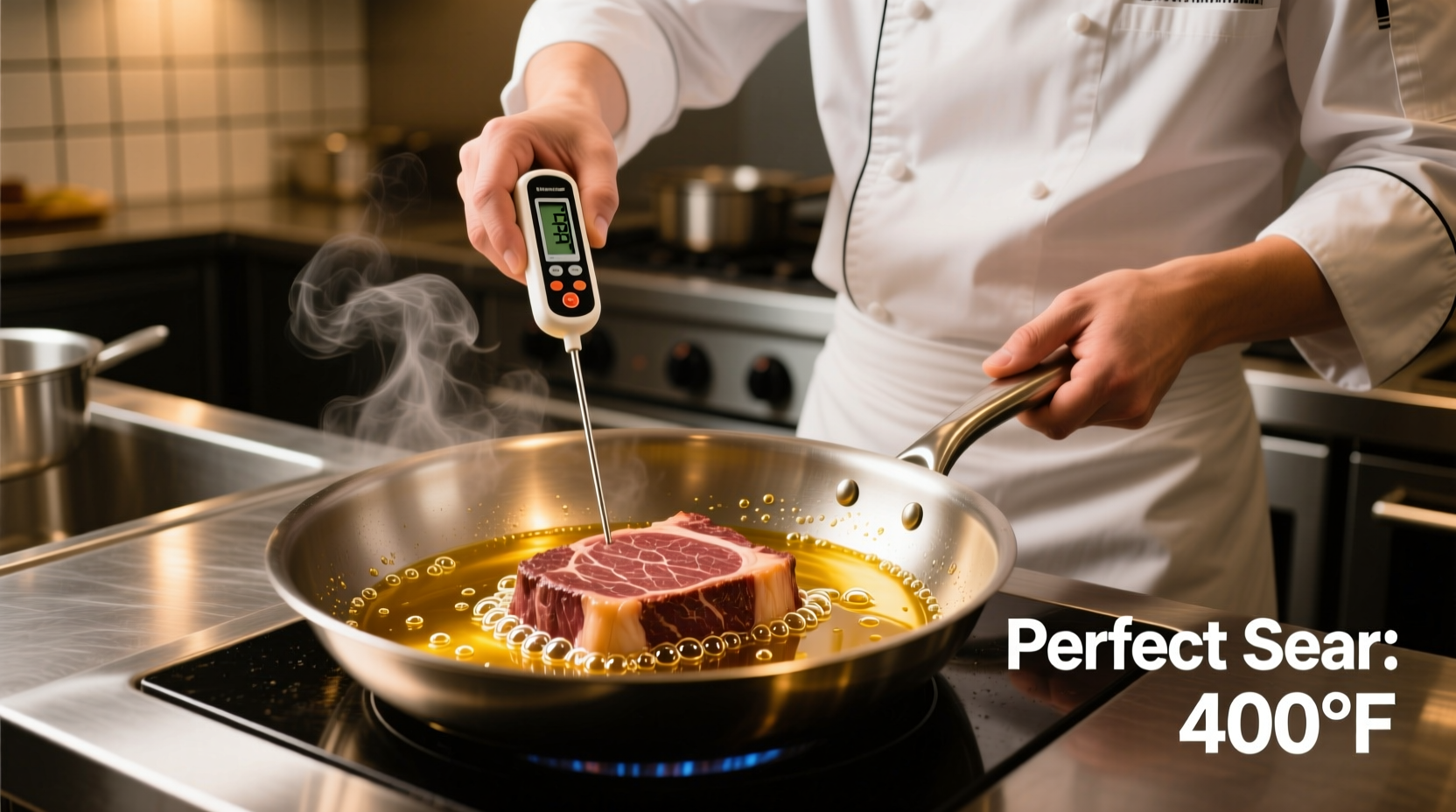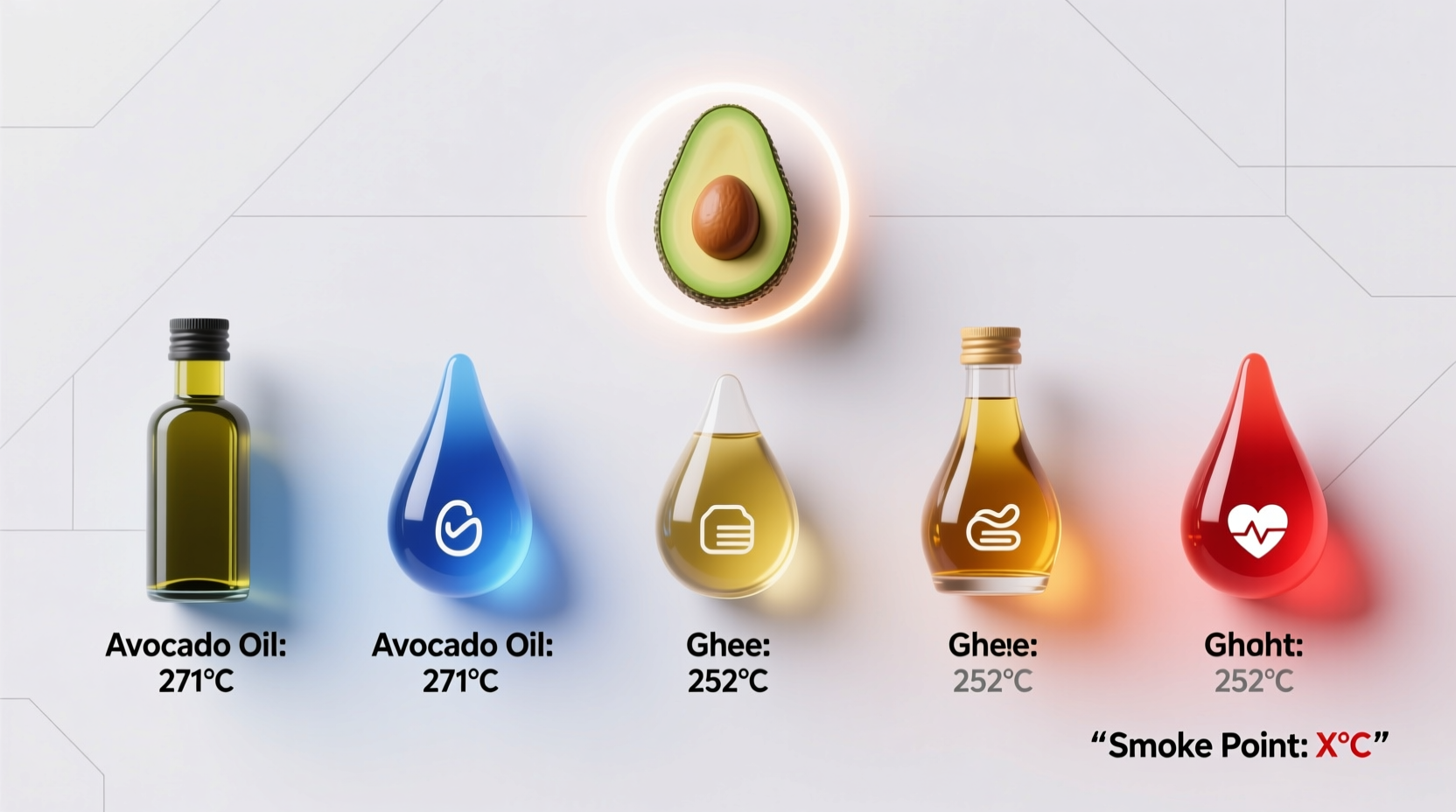Refined avocado oil has the highest smoke point among common cooking oils at 520°F (271°C), making it ideal for high-heat cooking methods like deep frying, searing, and stir-frying.
When you're firing up the stove for high-temperature cooking, choosing the right oil isn't just about flavor—it's about safety, nutrition, and achieving perfect results. Understanding smoke points helps prevent dangerous oil fires, bitter flavors, and harmful compounds in your food. This guide delivers precisely what you need to know about cooking oils and their heat tolerance, backed by culinary science and practical kitchen experience.
Why Smoke Point Matters More Than You Think
The smoke point represents the temperature at which an oil begins to break down, producing visible smoke and harmful compounds like acrolein. When oil smokes:
- Nutritional value deteriorates significantly
- Unpleasant bitter flavors develop
- Potentially harmful free radicals form
- Oil becomes a fire hazard in your kitchen
Professional chefs and home cooks alike must match oil selection to cooking method. Using an oil beyond its smoke point ruins dishes and creates health risks, while selecting the right high-heat oil ensures crisp textures, clean flavors, and safer cooking.
Complete Cooking Oil Smoke Point Comparison
| Cooking Oil | Smoke Point (°F) | Smoke Point (°C) | Best Cooking Applications |
|---|---|---|---|
| Refined Avocado Oil | 520 | 271 | Deep frying, searing, stir-frying |
| Refined Safflower Oil | 510 | 266 | High-heat frying, commercial cooking |
| Refined Sunflower Oil | 485 | 252 | Deep frying, sautéing |
| Refined Peanut Oil | 470 | 243 | Deep frying, Asian cooking |
| Light Olive Oil | 465 | 241 | Medium-high heat cooking |
| Refined Canola Oil | 460 | 238 | Everyday frying, baking |
| Unrefined Coconut Oil | 350 | 177 | Low-heat cooking, baking |
| Extra Virgin Olive Oil | 325-375 | 163-191 | Salad dressings, low-heat cooking |
Note: Smoke points vary based on oil refinement, purity, and freshness. Refined oils consistently have higher smoke points than unrefined varieties.

When High Smoke Point Oil Makes the Difference
Not every cooking technique requires the highest smoke point oil. Understanding context boundaries helps you choose wisely:
Situations Requiring Highest Smoke Point Oils
- Deep frying: Requires temperatures between 350-375°F where refined avocado oil's 520°F capacity provides safety margin
- Searing meats: Needs 400-450°F to create perfect crust without burning
- Wok cooking: Traditional stir-frying requires 400-500°F for authentic results
- Commercial kitchens: Higher ambient temperatures require oils with greater heat tolerance
Situations Where Lower Smoke Point Oils Suffice
- Sauteing vegetables (typically 300-350°F)
- Baking (usually 300-375°F)
- Salad dressings and cold applications
- Finishing dishes with flavorful oils
The Evolution of Cooking Oil Refinement
Understanding the historical development of oil refinement explains why modern refined oils have dramatically higher smoke points than traditional preparations:
- Pre-20th century: Most oils were unrefined with smoke points below 400°F, limiting high-heat cooking techniques
- Early 1900s: Introduction of chemical refining processes increased smoke points by removing impurities
- Mid-20th century: Development of physical refining methods preserved more nutrients while raising smoke points
- Today: Advanced refining creates oils like avocado oil with smoke points exceeding 500°F while maintaining nutritional benefits
According to research from the University of California, Davis Department of Food Science & Technology, modern refining techniques remove free fatty acids and other compounds that lower smoke points, creating oils that remain stable at much higher temperatures (foodscience.ucdavis.edu).
Factors That Affect Your Oil's Actual Smoke Point
Several variables impact the smoke point you'll experience in your kitchen:
- Oil freshness: Used oil degrades with each use, lowering smoke point significantly
- Impurities: Food particles lower smoke point dramatically—always strain and store properly
- Light exposure: Oils degrade faster when exposed to light, reducing heat tolerance
- Water content: Even small amounts of water cause premature smoking
Practical Tips for High-Heat Cooking Success
Maximize your high smoke point oils with these professional techniques:
- Preheat your pan first: Add oil to hot pan rather than heating oil in cold pan
- Use a thermometer: Don't guess—use an infrared thermometer to monitor actual oil temperature
- Don't overcrowd: Adding too much food lowers oil temperature rapidly, requiring longer cooking
- Store properly: Keep oils in dark containers away from heat sources to maintain quality
- Know when to replace: Discard oil that appears dark, smells off, or smokes at lower temperatures
Health Considerations When Cooking with High Heat
When oils exceed their smoke points, they produce harmful compounds including:
- Acrolein (irritates eyes and respiratory system)
- Free radicals that contribute to inflammation
- Potentially carcinogenic polycyclic aromatic hydrocarbons (PAHs)
The American Heart Association confirms that using oils within their smoke point range preserves their health benefits while avoiding the creation of harmful compounds (heart.org).
Finding the Right Balance: Smoke Point vs. Flavor vs. Nutrition
While refined avocado oil has the highest smoke point, it's not always the best choice. Consider these factors when selecting cooking oils:
- Flavor profile: Neutral oils like avocado won't interfere with delicate flavors
- Nutritional content: Extra virgin olive oil has more antioxidants but lower smoke point
- Cost considerations: Avocado oil is more expensive than alternatives like peanut oil
- Sustainability: Consider environmental impact of different oil production methods
Professional chefs often maintain multiple oils for different applications rather than relying on a single "best" oil for all cooking needs.
Common Questions About Cooking Oil Smoke Points
Here are answers to frequently asked questions about cooking oils and smoke points:











 浙公网安备
33010002000092号
浙公网安备
33010002000092号 浙B2-20120091-4
浙B2-20120091-4